You'll discover five incredible midsummer recipes perfect for harnessing the sun's natural heat. Start with a sun-baked salmon packet filled with fresh herbs and lemon, or try roasting summer vegetables until they're perfectly tender. For a classic favorite, grill corn on the cob and dress it with Mexican-style toppings. Create a nutritious wild greens bowl packed with solar-cooked veggies and protein-rich toppings. If you're craving something heartier, slow-cook BBQ chicken in a solar oven for rich, smoky flavors. These sun-powered cooking techniques will transform your outdoor culinary adventures.
Sun-Baked Foil Packet Salmon
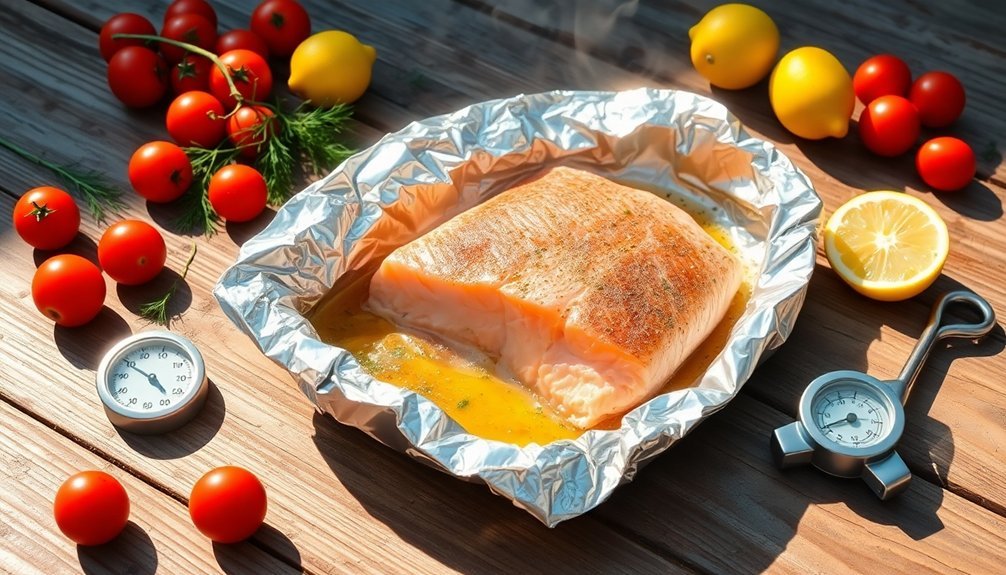
When you're craving a light yet satisfying summer meal, foil packet salmon delivers the perfect blend of convenience and flavor.
Start by layering asparagus or cherry tomatoes on heavy-duty foil, then place a seasoned salmon fillet on top. You'll want to drizzle it with olive oil and sprinkle salt, pepper, and your choice of herbs like dill, oregano, or thyme. For optimal results, use wild-caught salmon fillets to maximize flavor and nutrition.
Add fresh lemon slices and minced garlic for extra zest.
Fold the foil to create a sealed packet that'll trap moisture and flavors. For outdoor cooking, place your packets in a sunny spot for 30-45 minutes, depending on the fillet's thickness.
The fish is done when it flakes easily with a fork. Serve it straight from the packet with a final squeeze of lemon and a drizzle of infused oil.
Solar Roasted Summer Vegetables
As summer's bounty reaches its peak, solar roasting transforms fresh vegetables into caramelized, flavor-packed delights.
You'll want to start with a mix of zucchini, summer squash, bell peppers, red onions, and cherry tomatoes, all cut into uniform pieces for even cooking. The uniform sizes ensure consistent roasting throughout all vegetables.
Line your baking sheet with parchment paper and arrange your vegetables in a single layer. Drizzle them with olive oil, add minced garlic, and season with salt and pepper.
Once your solar oven reaches 250-300°F, you're ready to begin. Remember to stir every 15 minutes for uniform roasting.
You can also experiment with other vegetables like carrots, potatoes, artichokes, broccoli, and eggplant.
For denser vegetables like potatoes and artichokes, use a covered pan with a bit of water for steaming. Test doneness with a fork.
Sunshine Grilled Corn
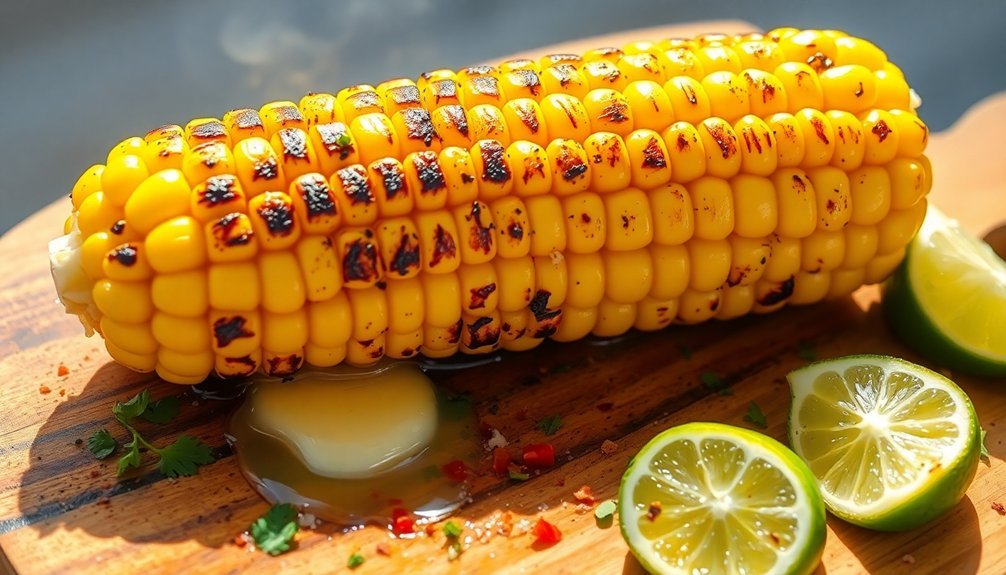
Fresh summer corn reaches its pinnacle of sweetness on the grill, making it a perfect companion to those solar-roasted vegetables.
You've got two foolproof methods: grilling with or without husks. For bare corn, brush it with olive oil or avocado oil, then grill on medium-high heat, rotating every few minutes until you get those beautiful char marks.
If you're keeping the husks on, simply place them directly on the grill for 15 minutes.
You don't need to soak the corn beforehand, but you'll want to dress it up before serving.
Try a classic combo of butter, salt, and pepper, or go bold with a Mexican-style treatment using mayo, chili powder, and lime. The nutritional value is low, with only about 80 calories per serving.
For an aromatic twist, brush the corn with rosemary-garlic oil before grilling.
Sun-Cooked Wild Greens Bowl
Taking advantage of nature's warmth, this vibrant wild greens bowl combines solar-cooked vegetables with fresh, raw ingredients for a satisfying summer meal.
You'll start with a base of cooked brown rice or quinoa, then layer it with wild greens like kale, arugula, and spinach.
Top your bowl with a mix of solar-cooked vegetables, such as tender sweet potatoes and beets, alongside raw, grated carrots for textural contrast.
For protein, add cubed tofu, and dress your creation with either a creamy balsamic dressing or sunflower seed sauce.
Don't forget to sprinkle pistachios and sunflower seeds for crunch.
You can enhance the flavors with nutritional yeast, fresh herbs, and a splash of citrus.
This bowl's versatility lets you adapt ingredients based on what's available in your summer garden.
Solar BBQ Chicken
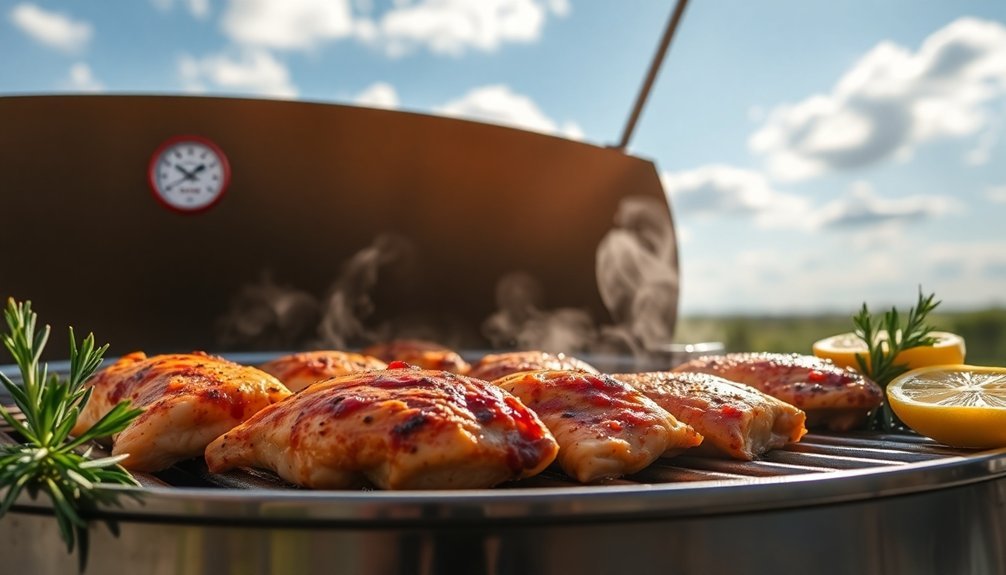
From plant-based bowls to savory meats, solar cooking offers endless possibilities.
For a delicious solar BBQ chicken, you'll need 1½ to 2 pounds of chicken pieces and your favorite seasonings like garlic powder, onion powder, and thyme.
Place your seasoned chicken in a dark-colored pot with a lid, positioning your solar oven to face south for maximum sun exposure. Cook for 1¼ to 2 hours until tender, then pour off the broth (save it for future recipes).
Next, slather your chicken with barbecue sauce and continue cooking for another hour. Make sure your oven maintains at least 180°F for food safety.
You can also use a whole chicken weighing 3-4 pounds, which will give you enough meat for two separate meals.
Remember to adjust cooking times based on weather conditions and sun intensity.
Frequently Asked Questions
How Do You Maintain Safe Food Temperatures When Cooking With Solar Power?
You'll need to use a digital thermometer, keep food above 140°F, monitor the oven's position every hour, and guarantee meats reach proper temperatures: 145°F for whole cuts, 160°F ground, 165°F poultry.
Can Solar Cooking Work Effectively in Humid Summer Conditions?
You can solar cook effectively in humid summers, but you'll face challenges. While humidity and clouds can slow cooking times, you'll succeed by using proper ventilation, strategic timing, and enhanced insulation techniques.
What Backup Cooking Methods Should I Prepare for Unexpected Cloud Cover?
You'll need a portable stove with extra fuel as your primary backup. Pack a lightweight camp stove, matches, and some no-cook snacks. Keep aluminum trays handy if you need to switch to campfire cooking.
How Do Different Colored Cooking Containers Affect Solar Cooking Efficiency?
You'll get the best results using dark-colored containers since they absorb more sunlight and convert it to heat efficiently. Light-colored containers reflect sunlight away, greatly reducing your cooking temperature and extending cooking times.
Is Solar Cooking Safe for Marinated Meats and Acidic Ingredients?
You can safely solar cook marinated meats if you'll monitor internal temperatures closely, avoid the danger zone (40-140°F), and guarantee thorough cooking. The acid in marinades won't compromise safety when you follow proper guidelines.
In Summary
You've now discovered five fantastic ways to harness the sun's energy for your summer meals. With a solar oven or reflector cooker, you'll save on energy costs while enjoying the sustainable art of sun cooking. Whether you're camping, enjoying a backyard gathering, or simply want to try something new, these recipes prove that Mother Nature's heat can create delicious, eco-friendly dishes right in your own outdoor space.


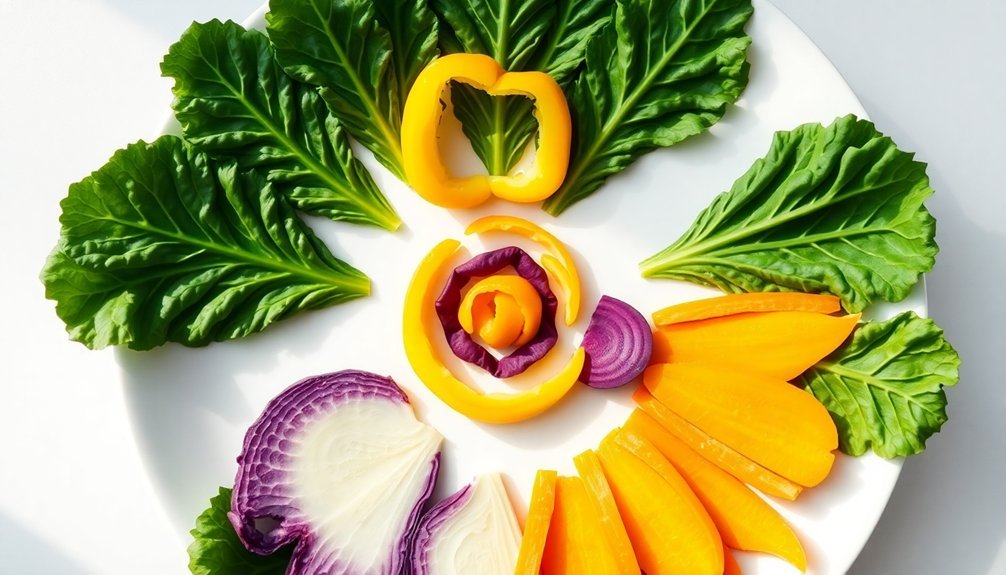
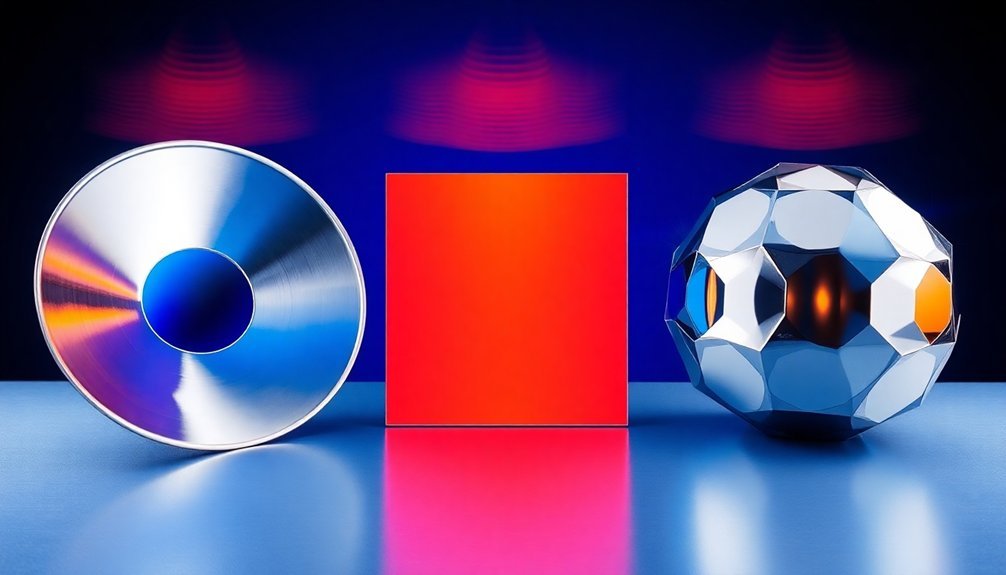
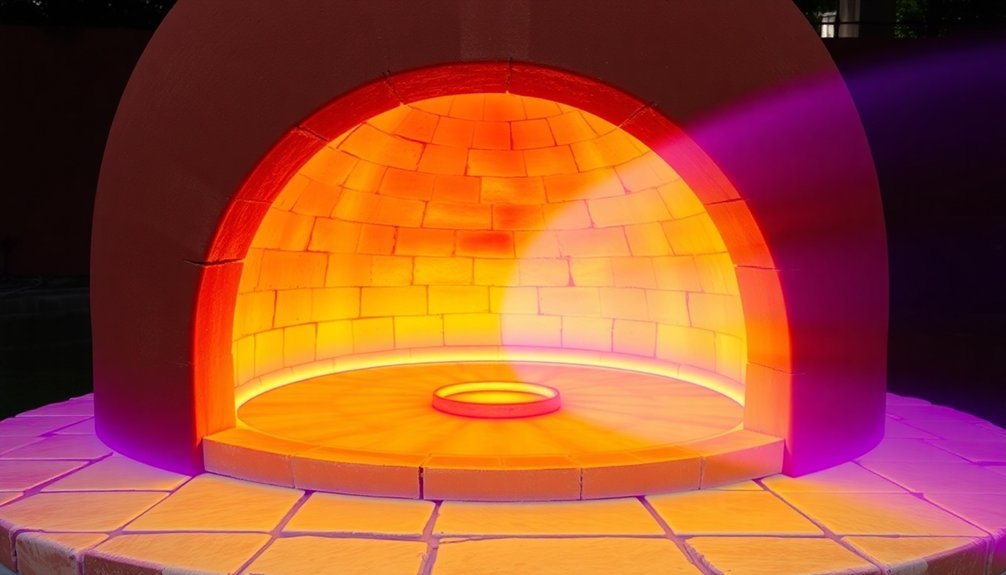
Leave a Reply